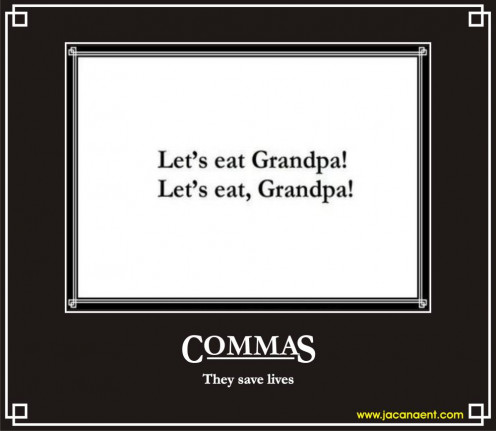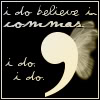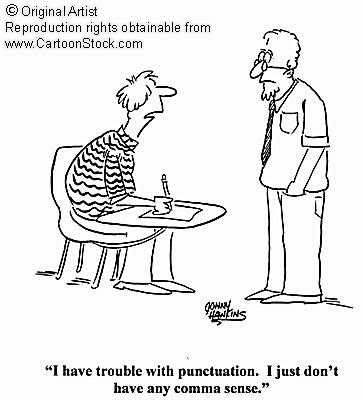How to Write Effective Sentences in a Paragraph or Essay---and Get the Commas Right!


Effective Writing: How to Write Effective Compound Sentences----and Get the Commas in the Correct Place!
Whether you are in college, getting ready to go to college, or still in high school, you may have found yourself confused about where to put commas. If you are puzzled about the use of commas in various sentences, read the next few paragraphs carefully. You will find some simple guidelines for writing effective simple and compound sentences. Complex sentences will be the topic of my next hub. But for now, let’s focus on simple and compound sentences.
The basic unit in an essay or paragraph is the sentence. Sentences are made up of words, and the words must be strung together effectively, or the paragraphs and essays won’t make sense. The way a writer strings words together is the writer’s style, and that style may vary from one writer to another. For example, Ernest Hemingway effectively used short, clipped sentences; whereas, Nathanial Hawthorne’s style involved a more elaborate use of words and phrases with more flowery language. Writers have their own style; however, no matter what the style, correctly written sentences must follow certain rules.
Variety in Sentence Length and Type
The three main types of sentences according to structure are simple, compound, and complex sentences. Good paragraphs are composed of some sentences that are simple, some that are compound, and some that are complex. A few sentences may be compound complex, which I plan to discuss in my next hub after this one, “How to Write Effective Complex Sentences.” In addition to variety based on structure, a good paragraph consists of sentences that vary in length. Some sentences should be short, some medium in length, and some longer. In order to write sentences that are punctuated correctly, the writer should follow a few simple rules. In order to punctuate sentences correctly, writers should understand simple sentences, compound sentences, and complex sentences, as well as the comma rules that go with each type.
First, let’s review simple, compound, and complex sentences. If you learn how to write simple, compound, and complex sentences correctly, you will never again have to worry, “Do I need a comma here? Or should I put one there? Follow these guidelines, and you will know where the commas go.
Simple Sentence
A simple sentence is one that has one main subject and verb. The following sentence is a simple sentence:
John went to the store and bought milk and eggs.
In this sentence, the subject is John, and the verbs are went and bought. Although this sentence has two verbs, went and bought, the sentence is a simple sentence because there is only one subject and verb. Went and bought are two verbs that are used together with the subject John. This sentence has a compound verb but is not a compound sentence. (Notice that this sentence is a simple sentence----the subject is sentence and the compound verb is has and is. The sentence has a compound verb but is a simple sentence. Therefore, do not place a comma before the conjunction and.
Simple Sentence Example:
Kevin ordered three new books from amazon.com. (Simple sentence)
Practice
Write at least three simple sentences. Remember do not put a comma unless you have a reason. Generally, simple sentences do not require commas.
Quick Comma Review
Note: The following sentences contain some examples of commas used for reasons other than compound sentences.
Words in a series: Alice bought ice cream, cake, carrots, cokes, and celery. Do place the final comma before the conjunction.
Dates: The school commemorated its one hundred year day on December 5, 2001, and planned a big celebration. (notice the comma after the day (5) and after the year (2001).
Parts of an address: My cousin lives at 100 North Glenn Avenue, Auburn, Alabama.
Appositives: Appositives are word groups that describe or rename a noun or pronoun.
Example: Uncle Joe, my favorite relative, is planning a trip to Europe. (my favorite relative is an appositive that renames Uncle Joe).
Compound Sentence
A simple sentence contains one complete thought---one independent clause. On the other hand, a compound sentence has two complete thoughts. The following sentence is an example of a compound sentence:
Example: John went to the store, and he bought milk and eggs.
This sentence has two complete thoughts; the conjunction and separates the two independent thoughts. Sometimes the complete thoughts are referred to as independent clauses. A clause is a group of words that has a subject and a verb. An independent clause is a group of words with a subject and a verb that can stand alone as a sentence, a complete thought.
Three Types of Compound Sentences
There are three main ways to write a compound sentence. If your paragraphs and essays are to have variety, you should write some compound sentences of each type. Here are the three ways to write compound sentences:
Compound sentences using coordinating conjunctions. Always place a comma before the conjunction when you write two independent clauses (two complete thoughts) that are connected with a conjunction
FANBOYS
Coordinating conjunctions---The acronym FANBOYS can help you remember the seven coordinating conjunctions: for, and, nor, but, or, yet, so
You should memorize these seven conjunctions and practice using them often.
Example: Mary wanted to write a long letter to her sister Joan, but her mother encouraged her to call her sister instead.
NOTE: The word for is a coordinating conjunction when the word because can be substituted in place of for. Otherwise, the word for is a preposition.
Example: Mary bought a lovely necklace for her mother. (For is a preposition)
Example: Lacey wanted to go to the mall, for she needed to shop for a new dress. (For is a coordinating conjunction. The word because can be substituted in place of for)
Practice: Write 3 compound sentences using one of the FANBOYS. Ask your teacher or someone you know to check them and make sure that your sentences are actually compound and that you correctly placed the comma before the FANBOYS conjunction.
2. Compound sentences that use only a semi-colon (;) between the two independent clauses.
Example: Lacey wanted to go to the mall; she needed to shop for a new dress.
NOTE: Never use a conjunction with a semi-colon. Also, the second part of the compound sentence should not begin with a capital letter.
A semi-colon between two independent clauses is ideal for use when the independent clauses are short and are closely related in meaning.
Example: Jeremy and Jonathan play baseball; they both love the game.
Practice: Write at least three compound sentences using only a semi-colon between the two independent clauses.
NOTE: Remember you never use conjunctions when you use a semicolon. FANBOYS go with commas in compound sentences---never with semicolons.
3. Compound sentences using a semi-colon and a transition (comma goes after the colon).
Most English textbooks have an index, a listing at the back of the book that allows you to look up words and find the pages where those words are discussed. The word transitions are found in the index of most English texts, both high school and college textbooks. A few textbooks refer to these words as conjunctive adverbs; however, I prefer the word transition because these words provide bridges between ideas, words, sentences, and even paragraphs.
The following chart provides a list of many common transitions.
- However in addition therefore
- Moreover in contrast consequently
- Nevertheless likewise as a consequence
- Also similarly first
- Hence in the same way finally
- Furthermore as a result specifically
Additional transitions can be found at this website:
http://www.elc.byu.edu/classes/buck/w_garden/classes/buck/transitions.html
Example: Melissa planned a lovely picnic; however, she cancelled her plans because the rain continued all day.
NOTE: The semi-colon is necessary because this sentence has two independent clauses. The comma is necessary after the word however because commas should always be placed after a transition.
NOTE: Sometimes transitions are placed inside a simple sentence. When this arrangement exists, notice that a comma should be placed before and after the transition.
Susan, however, did not agree with the speaker’s argument. (simple sentence---the transition however takes commas before and after. No semicolon is required in this sentence because the sentence is a simple sentence, not a compound sentence.
Example: John wrote his name beneath his brother’s signature on the petition; on the other hand, Jason decided not to sign the petition. (compound sentence with transition)
Example: Frank enjoyed the afternoon movie; furthermore, he decided to see it again the next day. (compound sentence using the transition furthermore).
Practice: Write 3 compound sentences using a transition between the independent clauses. Be sure you place a semi-colon before the transition and a comma after the transition.
Caveats
Beware of some common errors and clichés that can lead you down the wrong path in writing and punctuating sentences. Some of these incorrect ideas:
1. When in doubt, leave it out.
This little saying has no basis. If you learn how to write correct compound sentences, (and after my next hub, complex sentences), you will have no doubts about comma usage.
2. Put a comma whenever you pause.
This saying has no basis whatsoever. Pauses can vary from one reader to another. Correctly placed commas, according to the sentence type, guide the reader to pause correctly wherever the writer intended----not random pauses.
3. Leave off the last comma before the and when writing words in a series. This rule may have been in vogue many years ago, but most college English teachers like for students to place that last comma before the conjunction with words in a series. This correctly placed comma provides clarity for the reader.
4. It’s okay to place a comma between two independent clauses. No! When you place a comma (without a conjunction) between the parts of a compound sentence, the result is an egregious---yes---a really bad----error called a comma splice. Many college professors lower a grade considerably if the essay contains a comma splice.
5. No punctuation at all between two independent clauses. Definitely, no! This structure , called a run-on, is actually a more serious error than a comma splice. It is equivalent to running a red light---no stops. If your papers have comma splices or run-ons marked, then review the types of compound sentences. Using one of these types of compound sentences is one way to remedy a comma splice or run-on.
Summary
Practice writing simple and compound sentences. Use all three types of compound sentences in your practice and become accustomed to using different FANBOYS. Remember to use the comma correctly before the FANBOYS conjunction when the sentence is compound. Also, practice writing some simple sentences. Remember the key is variety----vary your sentence length and vary your sentences according to structure.
After you have mastered writing simple and compound sentences, you’re ready to practice with complex sentences. My next hub will explain and give examples of different types of complex sentences.
Goodbye to the comma blues and happy writing!









